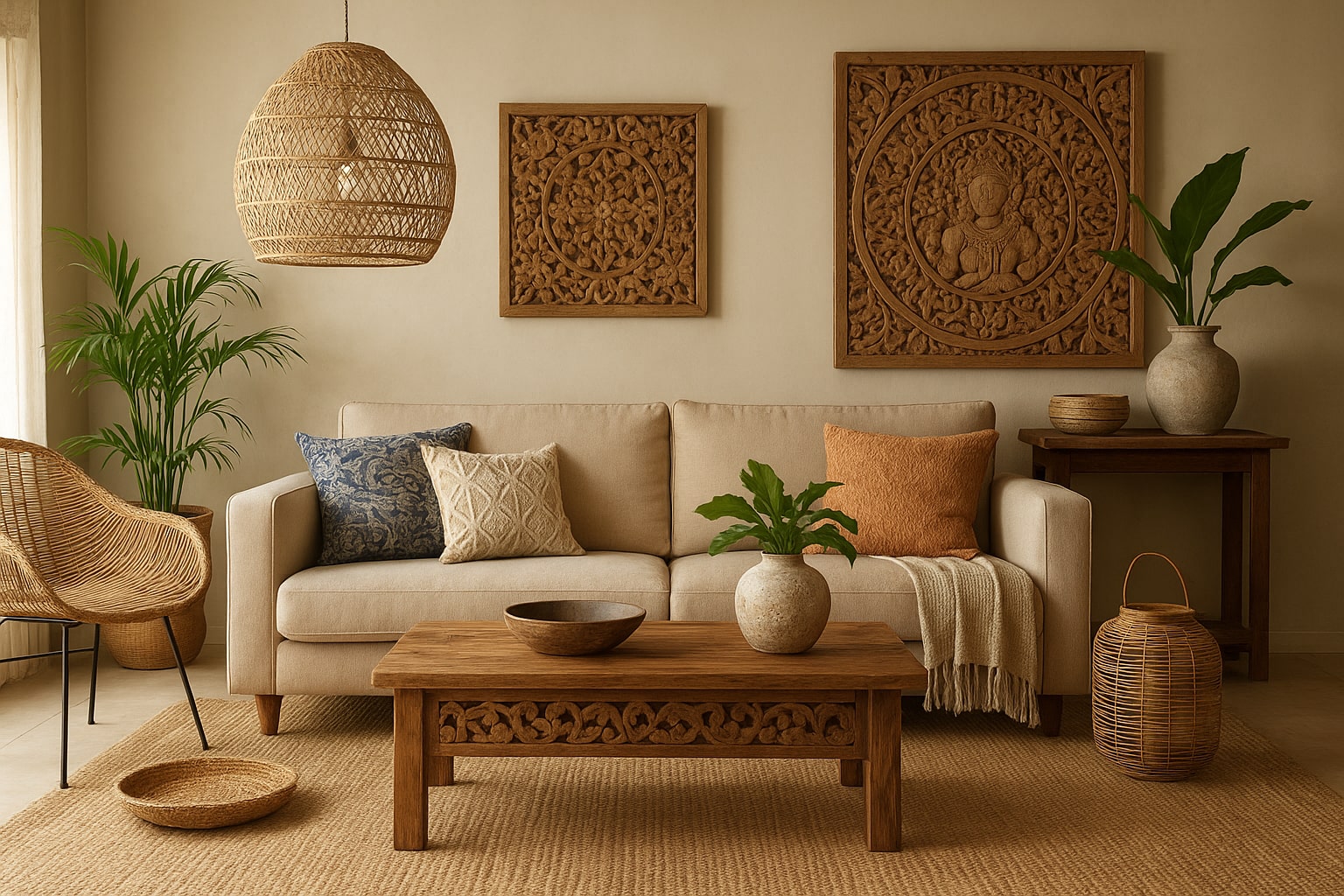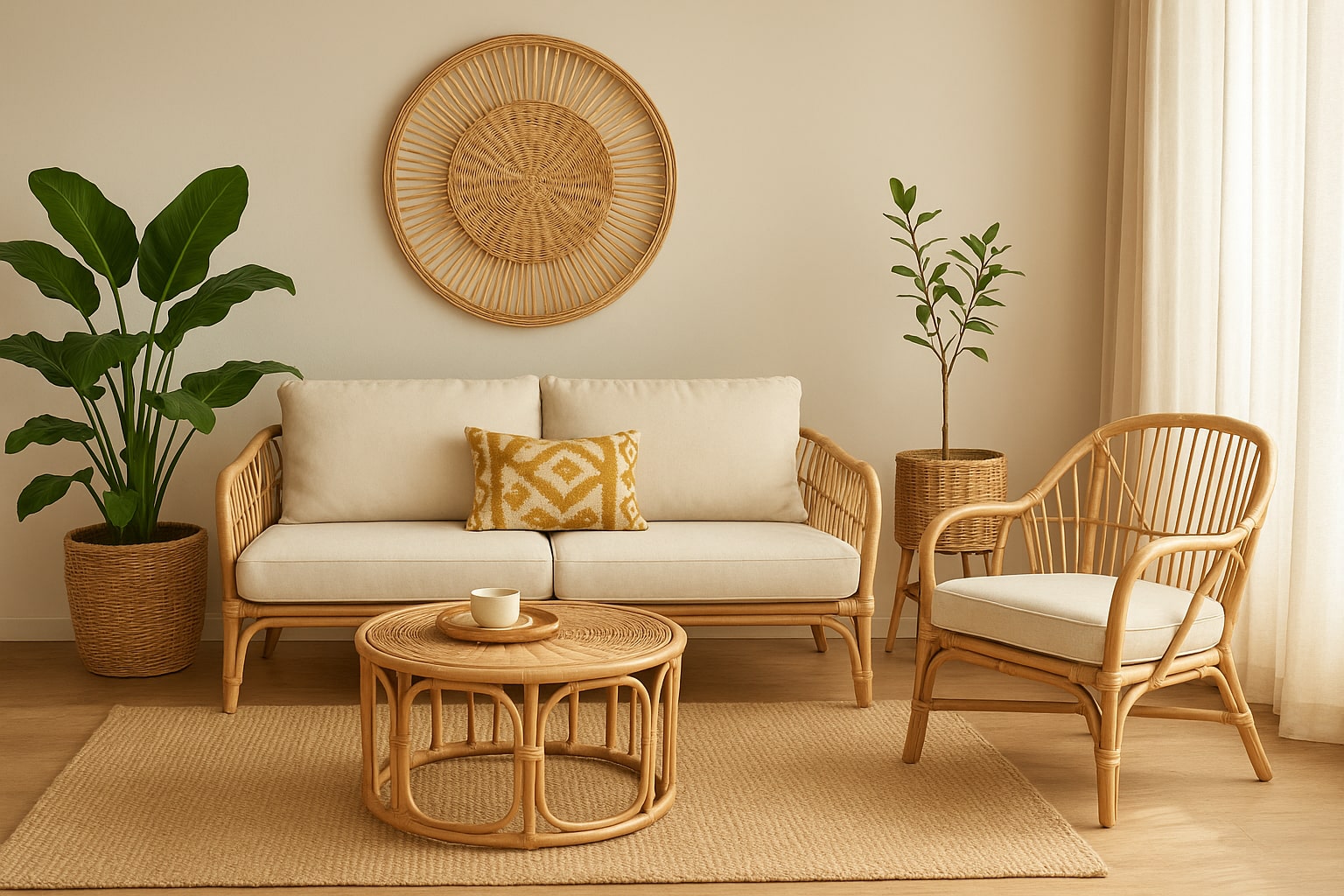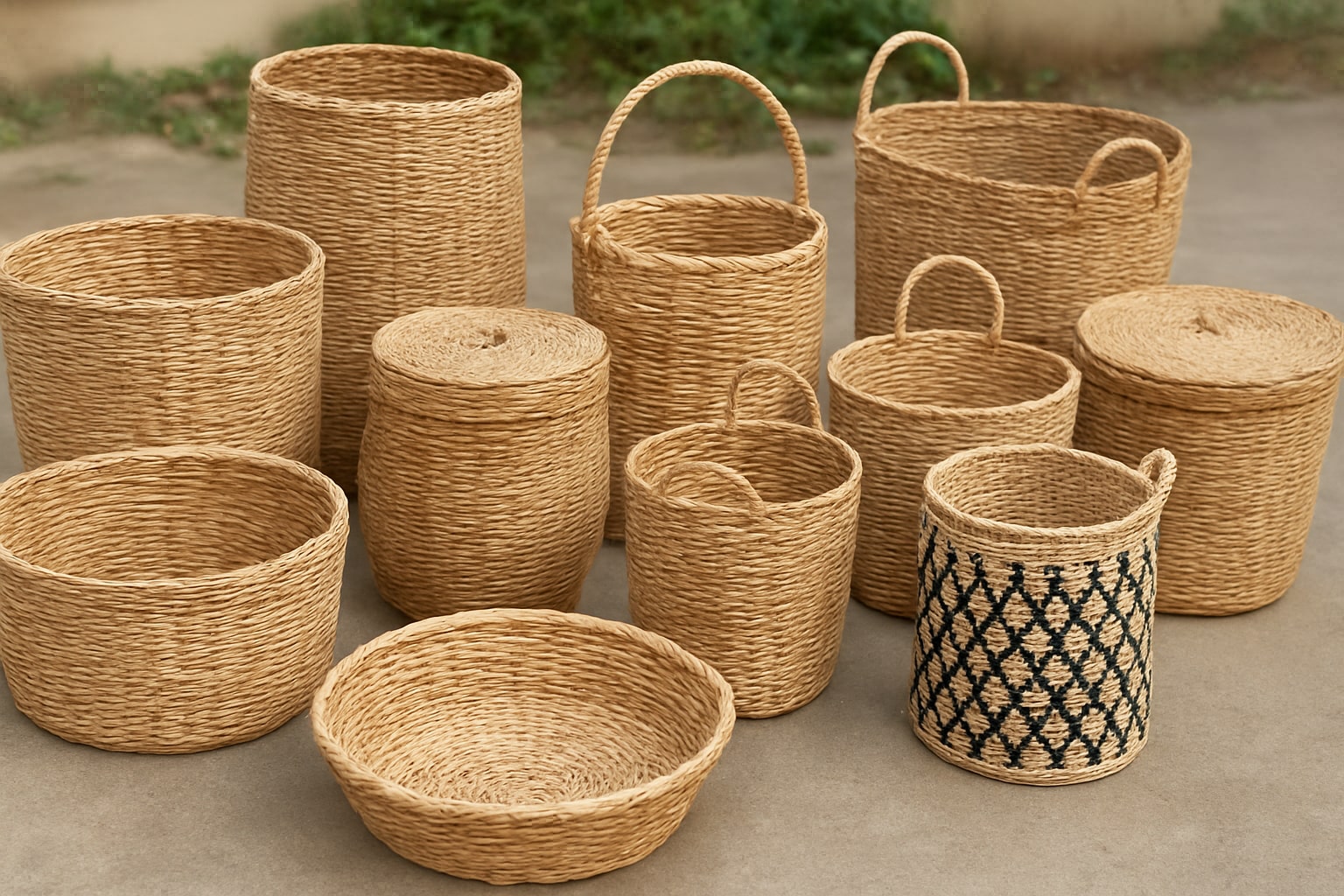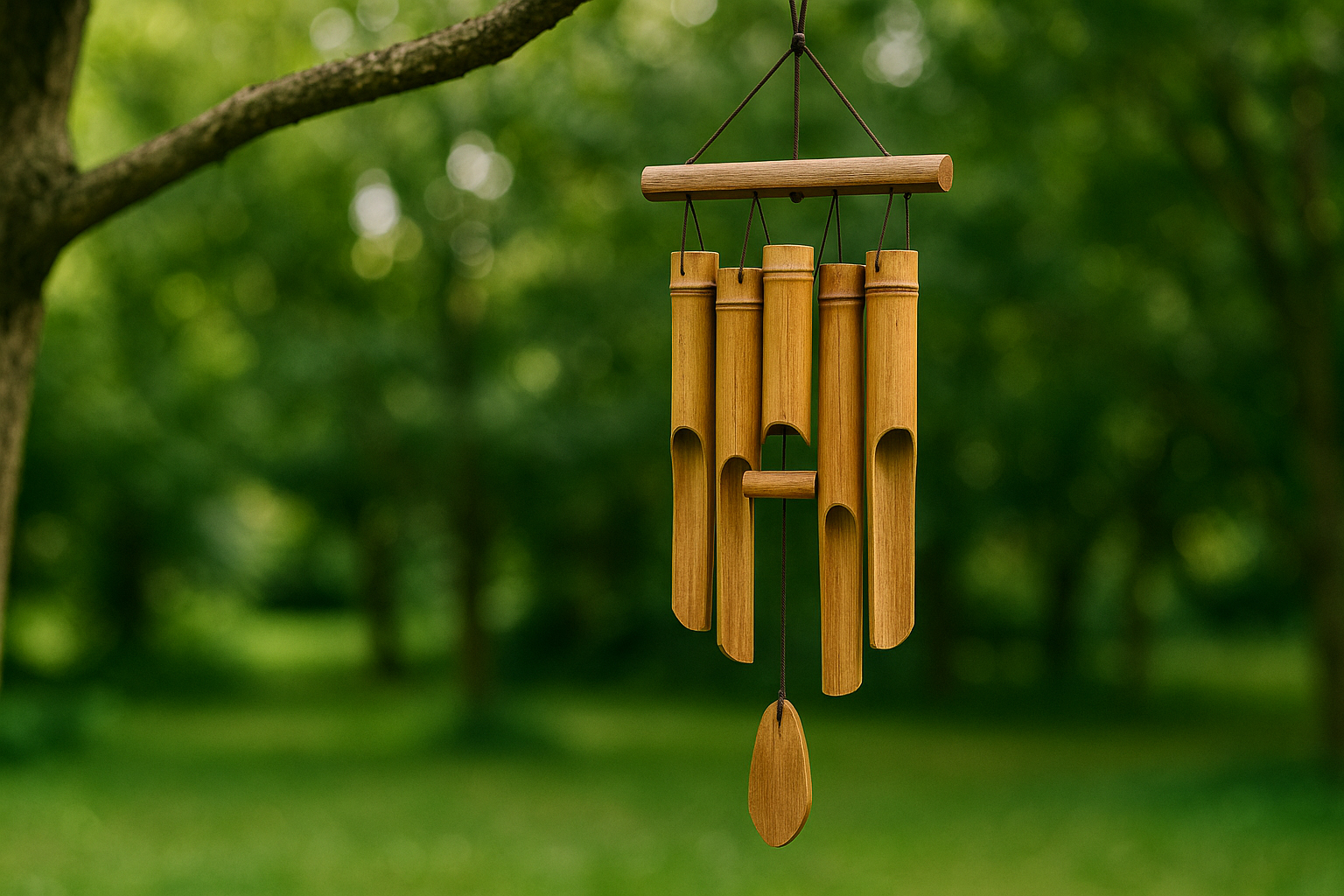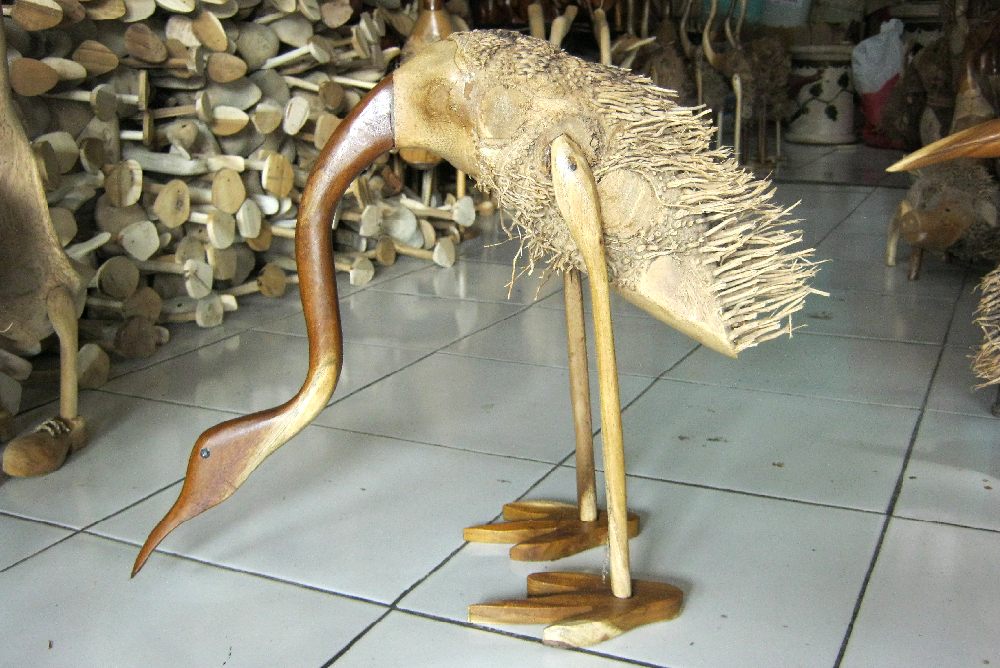Bali, often referred to as the “Island of the Gods,” is not only known for its breathtaking landscapes and spiritual ambiance but also for its deeply rooted artistic heritage. For centuries, Balinese artisans have meticulously crafted stunning handicrafts that showcase the island’s rich traditions, religious influences, and vibrant culture. From intricately carved wooden sculptures to handwoven textiles, these handicrafts reflect a unique blend of history, spirituality, and artistic mastery.
As global interest in traditional and sustainable craftsmanship grows, Bali’s handicrafts have gained immense popularity among collectors, travelers, and home décor enthusiasts. Whether you’re seeking a meaningful souvenir, a one-of-a-kind décor piece, or an authentic handmade gift, Bali offers a diverse range of artisanal creations that cater to every taste.
The Cultural Significance of Balinese Handicrafts
Balinese handicrafts are more than just beautiful objects; they are an important part of the island’s culture, history, and daily life. Every handcrafted item tells a story, often rooted in Hindu beliefs, local traditions, and ancestral skills passed down through generations. From intricate wood carvings to delicate textiles, each piece carries deep meaning and serves a purpose beyond decoration.
Handicrafts in Religious and Spiritual Life
Bali is known for its strong Hindu traditions, and handicrafts play a major role in religious practices. Many temples and shrines across the island feature hand-carved stone statues and wooden altars that depict Hindu gods and spiritual symbols. Balinese offerings, known as canang sari, are often placed in handwoven baskets made from palm leaves. These daily offerings, filled with flowers and incense, are a key part of the island’s spiritual life.
Masks, another essential handicraft, are used in sacred dances and ceremonies. Each mask represents a specific character from Hindu epics like the Ramayana and Mahabharata. For example, the Barong mask, symbolizing a mythical lion-like creature, is believed to bring protection and good luck. These masks are carefully carved and painted by skilled artisans, ensuring they meet religious and cultural standards.
A Reflection of Bali’s Artistic Heritage
The tradition of making handicrafts in Bali goes back hundreds of years. Artisans use techniques that have been refined over generations, keeping ancient artistic methods alive. Families often specialize in specific crafts, such as silver jewelry, wood carving, or textile weaving. This allows them to maintain a high level of craftsmanship while preserving their cultural heritage.
Balinese handicrafts also reflect influences from different periods in history. For instance, the arrival of Indian and Chinese traders centuries ago introduced new artistic styles, which can still be seen in some jewelry designs and textile patterns today. Similarly, the Dutch colonial era brought Western influences, blending with traditional Balinese styles to create unique hybrid art forms.
Handicrafts as a Way of Life
For many Balinese people, handicrafts are more than just a cultural tradition—they are a way of life. Entire villages are dedicated to specific types of craftsmanship. For example:
- Celuk Village is famous for its gold and silver jewelry.
- Mas Village is known for its masterful wood carvings.
- Batuan Village specializes in traditional Balinese paintings.
- Tenganan Village is home to ikat and geringsing textile weaving.
In these villages, artisans spend years mastering their craft, ensuring that each piece is made with precision and care. The skills they learn from their ancestors help them earn a living while keeping Bali’s artistic traditions alive.
A Growing Global Demand
In recent years, Balinese handicrafts have gained international recognition. Many travelers and collectors seek out these handmade items as unique home décor, gifts, or fashion accessories. The rise of e-commerce has also made it easier for Balinese artisans to sell their work worldwide.
However, the increasing demand has also led to mass production and imitation products. While these replicas may look similar, they often lack the authenticity and spiritual depth of true Balinese craftsmanship. For this reason, buying directly from artisans or fair-trade shops is the best way to support genuine Balinese handicrafts.
Diverse Types of Bali Handicrafts
Balinese handicrafts are known for their intricate details, cultural symbolism, and high-quality craftsmanship. Each type of craft reflects the island’s rich traditions and deep spiritual roots. Many artisans learn their skills from their ancestors, ensuring that these artistic techniques are passed down through generations. Below are some of the most popular types of Balinese handicrafts, each with its own unique style and purpose.
Balinese Paintings
Balinese paintings are famous for their detailed storytelling and vibrant colors. Traditional paintings often depict scenes from Hindu epics like the Ramayana and Mahabharata. These paintings usually have a busy composition, filled with fine details and figures arranged in a way that tells a story.
- Kamasan Style: Originating from Kamasan Village, this style is influenced by wayang kulit (shadow puppets) and features earthy tones like brown, gold, and black.
- Batuan Style: This black-and-white painting style is known for its high level of detail and dramatic themes, often depicting village life, mythology, and spirits.
- Ubud Style: More modern and colorful, Ubud paintings blend traditional themes with natural landscapes, making them popular among art collectors.
Many Balinese artists still use natural pigments made from plants and minerals, keeping their work as authentic as possible.
Gold and Silver Jewelry
Bali has a long tradition of making intricate gold and silver jewelry. The village of Celuk is the center of metal craftsmanship, where artisans create rings, bracelets, necklaces, and earrings using detailed filigree and granulation techniques.
- Filigree Work: Thin strands of silver or gold are twisted and soldered together to form delicate patterns.
- Granulation: Tiny metal beads are carefully arranged to create unique textures and designs.
- Nature-Inspired Motifs: Many Balinese jewelry pieces feature symbols like flowers, leaves, and mythical creatures, representing harmony with nature.
Tourists visiting Celuk can watch artisans at work and even participate in jewelry-making workshops.
Balinese Masks
Masks are an important part of Balinese culture, especially in traditional dance performances and ceremonies. These masks are hand-carved from wood and painted with bold colors to represent different characters.
- Barong Mask: Represents a mythical lion-like creature that symbolizes protection and good fortune.
- Rangda Mask: Depicts the fearsome demon queen, often used in dance performances to represent the battle between good and evil.
- Topeng Masks: Used in storytelling performances, these masks portray kings, priests, and villagers in historical reenactments.
Each mask must be carved with great care, as Balinese people believe they hold spiritual energy.
Textiles – Endek and Songket
Balinese textiles are highly valued for their intricate weaving techniques and beautiful patterns. Two of the most famous types are Endek and Songket.
- Endek: A traditional woven fabric with geometric and floral patterns. It is commonly used for clothing, ceremonial attire, and home decorations.
- Songket: A luxurious fabric woven with gold or silver threads, often worn during important ceremonies and weddings.
The village of Tenganan is well known for its traditional double ikat weaving, where threads are dyed before being woven into intricate designs.
Coconut Shell Crafts
Balinese artisans are experts at turning everyday materials into beautiful works of art. Coconut shells, often considered waste, are transformed into bowls, lamps, buttons, and jewelry.
- Eco-Friendly: These crafts promote sustainability by using natural and biodegradable materials.
- Hand-Carved Designs: Many coconut shell products feature intricate carvings of animals, flowers, and traditional Balinese motifs.
- Functional Art: Coconut shell crafts are not only decorative but also useful, making them popular souvenirs.
Buying coconut shell handicrafts supports local artisans while helping to reduce waste.
Weaving Crafts
Weaving is a traditional skill in Bali, and artisans use natural materials like bamboo, rattan, and pandan leaves to create woven baskets, mats, and bags.
- Ata Bags: These sturdy, handwoven bags are made from ata grass and are known for their durability and stylish designs.
- Rattan Furniture: Many Balinese homes and resorts feature handwoven rattan chairs, tables, and lampshades.
- Ceremonial Baskets: Used in religious offerings, these baskets are often woven with bright colors and intricate patterns.
Weaving requires patience and precision, with some larger items taking weeks to complete.

Wood and Stone Sculptures
Balinese wood and stone carvings are some of the most detailed and impressive in Southeast Asia. Skilled artisans create everything from small figurines to massive temple statues.
- Wood Carvings: Typically made from teak, mahogany, or sandalwood, these carvings depict Hindu gods, mythical creatures, and scenes from everyday Balinese life.
- Stone Sculptures: Crafted from volcanic rock, these statues are often found in temples and gardens, representing deities and spiritual protectors.
- Custom Pieces: Many artisans take custom orders, creating one-of-a-kind sculptures for homes, hotels, and spiritual spaces.
The village of Mas is the heart of Bali’s wood carving industry, while Batubulan is known for its impressive stone statues.
Supporting Balinese Handicrafts
Bali handicrafts industry is essential to the local economy, providing income for thousands of artisans. By purchasing authentic, handmade products, visitors help preserve these traditional skills and support the artisans’ livelihoods.
When shopping for Balinese handicrafts, look for high-quality, handcrafted items rather than mass-produced imitations. Visiting artisan villages, workshops, and local markets is the best way to find authentic pieces while gaining a deeper appreciation for Bali’s incredible craftsmanship.
Prominent Craft Centers in Bali
Bali is home to several villages and towns that specialize in traditional handicrafts. These areas have been dedicated to craftsmanship for generations, with artisans passing down their skills from parents to children. Each village is known for a specific type of handicraft, making it easy for visitors to explore and purchase authentic handmade goods. Below are some of the most famous craft centers in Bali.
Ubud – The Artistic Heart of Bali
Ubud is often called the cultural and artistic hub of Bali. It is home to many painters, sculptors, and craftsmen who create unique and high-quality handicrafts. The town is surrounded by smaller villages that specialize in different forms of art.
- Ubud Art Market (Pasar Seni Ubud): This is one of the best places to find locally made handicrafts, including paintings, woven bags, wooden carvings, and jewelry.
- Painting Galleries: Ubud is famous for its traditional and contemporary Balinese paintings. Visitors can explore galleries featuring styles like Kamasan, Batuan, and Ubud-style paintings.
- Handmade Batik and Textiles: Many shops in Ubud sell beautiful handwoven fabrics, such as endek and ikat, as well as handcrafted batik clothing.
Several workshops in Ubud offer classes where visitors can learn painting, batik-making, or jewelry crafting, providing a hands-on experience with Balinese art.
Celuk Village – The Center of Gold and Silver Jewelry
Located in Gianyar Regency, Celuk Village is the center of Bali’s gold and silver jewelry-making. The artisans here are famous for their intricate designs and detailed metalwork.
- Silver Workshops: Many shops in Celuk allow visitors to watch artisans at work and even participate in jewelry-making classes.
- Unique Designs: Balinese silver jewelry often features floral patterns, traditional Hindu symbols, and delicate filigree work.
- Gold Jewelry: In addition to silver, Celuk is also known for its handcrafted gold jewelry, which is often used in traditional Balinese ceremonies.
For those interested in purchasing high-quality, handmade jewelry, Celuk Village offers a wide range of options at various price points.
Mas Village – The Home of Master Wood Carvers
Mas Village is renowned for its woodcarving tradition, producing some of the finest wooden sculptures in Bali. This village has been crafting wooden art pieces for centuries, with many families specializing in different carving styles.
- Intricate Wooden Sculptures: Artisans in Mas create everything from small figurines to large, detailed sculptures of deities and mythological creatures.
- Balinese and Hindu Themes: Many wood carvings feature Hindu gods, traditional masks, and mythological characters.
- Custom Orders: Visitors can commission custom pieces, whether for home décor or spiritual purposes.
Mas Village is the perfect destination for those looking to purchase unique, hand-carved wooden art directly from skilled craftsmen.
Batubulan Village – The Land of Stone Carvings
Batubulan is famous for its incredible stone carvings, which are commonly seen in Bali’s temples, gardens, and traditional homes. The village is located in the Gianyar region and is home to some of the most skilled stone carvers on the island.
- Volcanic Stone Statues: Many sculptures are made from soft volcanic rock, which is ideal for carving intricate details.
- Temple Guardians and Mythical Creatures: Common stone carvings include statues of Barong, Rangda, and Hindu gods, often used as spiritual protectors.
- Garden and Bali Home Decor: Smaller stone carvings, such as fountains, lanterns, and wall panels, are also popular among tourists.
Visitors to Batubulan can watch artisans at work, learning about the techniques used to create these timeless sculptures.
Batuan Village – Traditional Balinese Paintings
Batuan Village is known for its distinctive painting style, which features dense compositions, dark tones, and intricate details. The artists here have been painting for generations, preserving the traditional techniques of Balinese art.
- Batuan Painting Style: These paintings often depict Hindu epics, village life, and supernatural beings, created with great attention to detail.
- Art Galleries and Workshops: Many families in Batuan operate small galleries where visitors can view and purchase authentic Balinese paintings.
- Handmade Scrolls and Decorative Art: In addition to paintings, artisans also create hand-painted scrolls and decorative pieces inspired by Balinese mythology.
For those interested in fine art, Batuan is one of the best places to find high-quality, traditional Balinese paintings.
Tenganan Village – The Home of Bali’s Ancient Weaving Tradition
Tenganan is one of Bali’s oldest villages and is famous for its geringsing double-ikat weaving, a technique that is practiced in only a few places in the world.
- Geringsing Textiles: This fabric is created using a complex dyeing process, where both the warp and weft threads are dyed before being woven together. The result is a beautifully symmetrical pattern.
- Traditional Village Atmosphere: Tenganan is home to the Bali Aga people, the island’s original inhabitants, who have preserved their ancient traditions.
- Handwoven Baskets and Accessories: In addition to textiles, artisans in Tenganan also make woven baskets, bracelets, and other handicrafts.
Because geringsing fabric is considered sacred, it is often used in ceremonies and worn during special occasions.
Kamasan Village – The Birthplace of Traditional Balinese Painting
Kamasan Village is known for its unique painting style, which has been used for centuries to decorate temples, palaces, and traditional homes.
- Wayang-Style Paintings: Inspired by shadow puppets, these paintings depict stories from Hindu epics in earthy colors like gold, brown, and red.
- Temple and Palace Artworks: Many historical buildings in Bali feature murals painted in the Kamasan style.
- Handmade Story Panels: Artisans create hand-painted panels that illustrate legendary Balinese tales, making them perfect souvenirs for art lovers.
Visiting Kamasan Village offers a glimpse into Bali’s artistic past, where painters still use ancient methods to create their masterpieces.
Sukawati Art Market – A One-Stop Destination for Handicrafts
Sukawati Art Market is one of the largest and most well-known markets for Balinese handicrafts. Located near Ubud, this market is a great place to find affordable handmade goods.
- Wide Variety of Crafts: The market offers everything from paintings and textiles to wooden carvings, masks, and jewelry.
- Best Bargaining Spot: Unlike boutiques, prices at Sukawati are negotiable, allowing visitors to get good deals on quality items.
- Traditional and Contemporary Pieces: In addition to traditional crafts, Sukawati also sells modern Balinese-inspired décor and fashion accessories.
While shopping at Sukawati, visitors should take their time to explore different stalls and compare prices to find the best deals.
Bali’s craft villages and markets provide an incredible opportunity to see artisans at work, learn about traditional techniques, and purchase high-quality, handmade products. Whether looking for silver jewelry, wood carvings, paintings, or textiles, each of these locations offers something unique for art lovers and collectors.
Supporting Sustainable and Ethical Craftsmanship
Balinese handicrafts are not only beautiful but also deeply connected to the island’s culture, traditions, and environment. However, as tourism and demand for Balinese arts have grown, so have challenges related to sustainability and ethical production. Supporting sustainable and ethical craftsmanship helps preserve traditional skills, protect the environment, and ensure that artisans receive fair compensation for their work.
Choosing Handmade Over Mass-Produced Items
One of the most effective ways to support ethical craftsmanship in Bali is by purchasing handmade items instead of mass-produced souvenirs. Many factory-made handicrafts, often sold in high-traffic tourist areas, are not created by local artisans but are instead produced in large quantities with cheap materials.
When shopping for authentic Balinese handicrafts, look for:
- Unique details and imperfections – Handmade products often have slight variations that make each piece one of a kind.
- Traditional tools and methods – Skilled artisans use time-honored techniques such as hand-carving, hand-weaving, and natural dyeing.
- Local materials – Sustainable crafts are typically made from responsibly sourced wood, bamboo, natural fibers, and recycled materials.
Supporting Fair Wages for Artisans
Many Balinese artisans rely on their craft as their primary source of income. Unfortunately, some middlemen and commercial businesses exploit craftsmen by paying them very little while selling their work at high prices. To ensure artisans are fairly compensated, consider the following:
- Buy directly from artisans – Visiting craft villages like Celuk (silver jewelry), Mas (wood carving), or Tenganan (weaving) allows you to purchase items straight from the makers.
- Shop at fair-trade markets and galleries – Certain markets and stores operate on ethical principles, ensuring that craftsmen receive fair wages.
- Be mindful of extremely low prices – If an item is priced too cheaply, it may indicate that the artisan was underpaid.
When artisans receive fair wages, they can continue their work without being forced to cut corners or switch to mass production.
Prioritizing Eco-Friendly and Sustainable Materials
Traditional Balinese handicrafts often use natural materials, but some modern crafts involve unsustainable practices, such as over-harvesting wood or using synthetic chemicals. To support sustainable craftsmanship, consider:
- Bamboo and rattan products – These materials grow quickly and are an eco-friendly alternative to plastic or non-renewable resources.
- Recycled and upcycled crafts – Some artisans create unique pieces using reclaimed wood, metal, or fabric, reducing waste and environmental impact.
- Organic and natural dyes – Many Balinese textiles, such as ikat and batik, traditionally use plant-based dyes instead of harmful synthetic chemicals.
Preserving Traditional Craftsmanship for Future Generations
Many of Bali’s traditional art forms are passed down through generations, but younger artisans are finding it harder to sustain these practices due to competition from cheap factory-made goods. Supporting ethical craftsmanship helps preserve these skills for the future.
- Attend workshops and craft experiences – Many artisan villages offer hands-on experiences where visitors can learn wood carving, batik-making, or silver jewelry crafting. These workshops provide income for artisans while spreading appreciation for their work.
- Share the stories behind the crafts – Learning about the cultural and spiritual meanings behind Balinese handicrafts deepens your connection to them and helps raise awareness about their importance.
- Encourage younger artisans – Buying from younger artists and craftspeople helps ensure that these traditions continue to thrive.
Bringing Bali’s Handicraft Heritage Into Your Life
Bali handicrafts are more than just decorative items—they are a reflection of centuries-old traditions, skilled craftsmanship, and deep cultural meaning. Whether you are drawn to intricately carved wooden statues, handwoven textiles, or delicate silver jewelry, each piece tells a unique story of Bali’s artistic soul.
By choosing authentic Bali products, you support local artisans, preserve traditional techniques, and contribute to sustainable and ethical craftsmanship. Whether you purchase directly from artisan villages, explore Bali’s bustling markets, or shop from ethical online stores, every mindful purchase helps keep these artistic traditions alive for generations to come.
Next time you visit Bali or shop for Balinese handicrafts online, take a moment to appreciate the effort, skill, and cultural heritage behind each piece. In doing so, you not only bring home a beautiful work of art but also become part of the journey in preserving Bali’s rich artisanal legacy.



